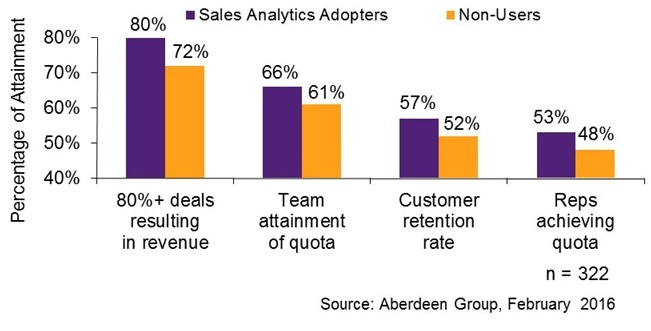sales
What Does Your Sales Pipeline Say About Your Company?
If your sales pipeline were taking a personality test, would it come off as a blank slate, erratic and unreliable, or well-adjusted and trustworthy? It may seem like an odd question, but bear with me. You see, your sales pipeline is a wealth of data that shows how well your business is performing.
If you’re like many companies, you probably can’t assign a personality to your sales pipeline at all. And if you don’t have any idea what your sales pipeline is telling you, then you’re not taking advantage of one of the most informative and useful tools available to your business.
The Purpose of a Sales Pipeline
The sad truth is that many sales teams these days have forgotten why they have a sales pipeline in the first place. The purpose of a sales pipeline is to gain visibility into all of your opportunities and manage them effectively. However, lack of accurate CRM data has turned what should be a goldmine of information into a threadbare outline. A sales pipeline like that can’t say anything about your company, good or bad.
How to Use Your Sales Pipeline Effectively
If you want your sales pipeline to reflect your company and offer you useful intelligence on how to improve, you need accurate and detailed information in your pipeline. A sales pipeline with the bare minimum of data doesn’t help anyone. A better approach is to use the power of big data to transform all of your company’s data into true insight into where your company is at and how you can improve over time.
What Key Pipeline Characteristics Say about Your Company
So is your pipeline saying your company is on track or failing? Let’s look at some common characteristics of a bad pipeline, then compare them to what a healthy company’s pipeline should look like.
- The Empty Pipeline: If you have very few leads in your sales pipeline, it means one of two things: Either you’re not accurately capturing lead information and reporting it in your pipeline, or your marketing team is failing to provide enough leads for sales.
- The Overflowing Pipeline: A huge amount of leads is not always a good thing. If you have more opportunities than you have sales reps to pursue them, it might be a sign that your marketing team isn’t doing a good enough job of qualifying leads before passing them on to sales. Sales pipeline management should be easy and effective. Try to winnow down your pipeline to the leads that are actually likely to close.
- The Missing Stages: Do the opportunities in your pipeline seem to skip a stage in the sales process? It’s a common problem. Either you need to reevaluate what type of sales process is best for your company or your reps need to do a better job of documenting each stage of the sales cycle.
- The Traffic Jam: Do your opportunities seem to bunch up at a certain stage of the sales cycle? If the majority of your leads are stuck in evaluation stage, for example, it’s a sign that you need to look further into your sales process. The odds are likely that you need to streamline the process, and your sales reps need to provide more valuable information and guidance for their opportunities during that time.
- The Gut Assessment: If you find that the opportunities that your sales reps promise are “sure to close” are actually duds, you have a problem. The sales pipeline should promote visibility and provide forecasts for future close rates. A sales pipeline based on your reps’ gut feelings doesn’t help anybody.
Okay, those are all issues you might be having with your sales pipeline, but what does a healthy sales pipeline look like?
- The Healthy Sales Pipeline: The sales pipelines at best-in-class companies have several things in common. First, it should have active opportunities in every stage of the sales cycle, spread evenly throughout the pipeline. It should have a manageable number of leads for the size of your sales team: enough that your team can be choosey about who to pursue, but not so huge that there’s no method to the selection process.
The most important aspect of a healthy sales pipeline is that it has a good amount of data, and that data is used to track and improve sales activities. The sales forecasts at best-in-class companies aren’t based on sales reps’ gut feelings, but rather on irrefutable data. In fact, an Aberdeen study found that companies who use sales analytics are 93% better at walking away from bad deals, 33% stronger at knowing which opportunities are most and least likely to close, and 27% better at devoting resources to top opportunities. The result is that 80% of forecasted sales really do close as expected.

If you want to take stock of your company health, take a look at your sales pipeline. The first step is to actually get accurate data, then use that data to identify areas where you’re doing well and where you need to improve.
If your sales pipeline is full of unreliable data based off of gut instincts (or worse: is missing information completely), it’s a sign that your company doesn’t have a strong foundation of sales strategy and visibility. Fortunately, there’s a better way.











